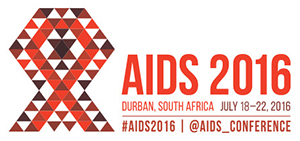
By Rebecca Waugh/IMA World Health
P
 articipants at the 21st International AIDS Conference in Durban, South Africa, were challenged to rally around a bold “fast-track” strategy designed to end the AIDS epidemic as a public health threat by 2030. Huge strides have been made in recent years as antiretroviral treatment has become affordable and accessible to the millions who are now on treatment; both AIDS-related deaths and mother-to-child transmission have plummeted as a result. However, HIV continues to spread, especially among particularly vulnerable populations; and almost half the people who need to be on treatment are not, oftentimes because they do not know their HIV status.
articipants at the 21st International AIDS Conference in Durban, South Africa, were challenged to rally around a bold “fast-track” strategy designed to end the AIDS epidemic as a public health threat by 2030. Huge strides have been made in recent years as antiretroviral treatment has become affordable and accessible to the millions who are now on treatment; both AIDS-related deaths and mother-to-child transmission have plummeted as a result. However, HIV continues to spread, especially among particularly vulnerable populations; and almost half the people who need to be on treatment are not, oftentimes because they do not know their HIV status.
“90-90-90” is shorthand for the international treatment campaign launched in 2014 to address this challenge. It breaks down this way:
⇒ By 2020, 90 percent of people with HIV have been tested and learned their status
⇒ By 2020, 90 percent of those diagnosed as HIV-positive are on sustained antiretroviral therapy
⇒ By 2020, 90 percent of those on treatment are virally suppressed, so that HIV does not impair their health and is unlikely to be transmissible
On July 20, the third day of the conference, IMA hosted a “talk show” to explore the challenges and opportunities for achieving 90-90-90 among adolescents and youth, an especially strategic age group when it comes to tackling AIDS. IMA and partner experts were tapped to share their perspectives and to engage the expertise in our audience: James Karongo of the National Organization of Peer Educators, Kenya; Dr. Natella Rakhmanina of Elizabeth Glaser Pediatric AIDS Foundation; Andrew Fullem of John Snow, Inc., and Theresa Nyamapachitu of IMA World Health.
The venue was the Faith Networking Zone in the lively, colorful, often noisy Global Village of the Conference. Despite all the competing distractions, a good crowd gathered and “leaned in” to be part of the conversation. A rich discussion ensued, with strong consensus on key points:
- We must reach adolescents and youth with both prevention and treatment interventions. More and more, HIV is becoming an epidemic of the young – both because children born before prevention of mother-to-child transmission was possible are now adolescents; because adolescents often are at high risk due to a host of cultural, economic, educational and physical vulnerability factors beyond their control as well as the experimental and risk-taking bent characteristic of their age. If we fail to reach this young cohort, the world risks a resurgence – rather than a quelling – of HIV.
- Reaching the 90-90-90 targets in these age groups will require approaches that are youth-friendly, non-judgmental, accessible, sustainable. Think creative. Think life-affirming. Health providers can help make that happen; faith leaders and faith communities can help make that happen; community outreach can help make that happen. Adolescents need to be engaged meaningfully – not just informing our strategies but providing leadership. They have ideas, energy, influence with their peers. And they have a huge stake in the outcome.
- Is 90-90-90 a realistic goal among adolescents and youth? Speakers and audience concurred: Absolutely! We can and must reach youth and adolescents with both prevention and treatment strategies. All of us – health providers, educators, community workers, faith leaders and youth themselves – need to not just to play our part but to double-down NOW.
Each doing what is within our scope, creatively and aggressively embracing the 90-90-90 challenge – while strengthening our prevention efforts as well – we can look toward a downward trajectory for HIV that will allow us to celebrate the end of AIDS as a public health threat by 2030.


